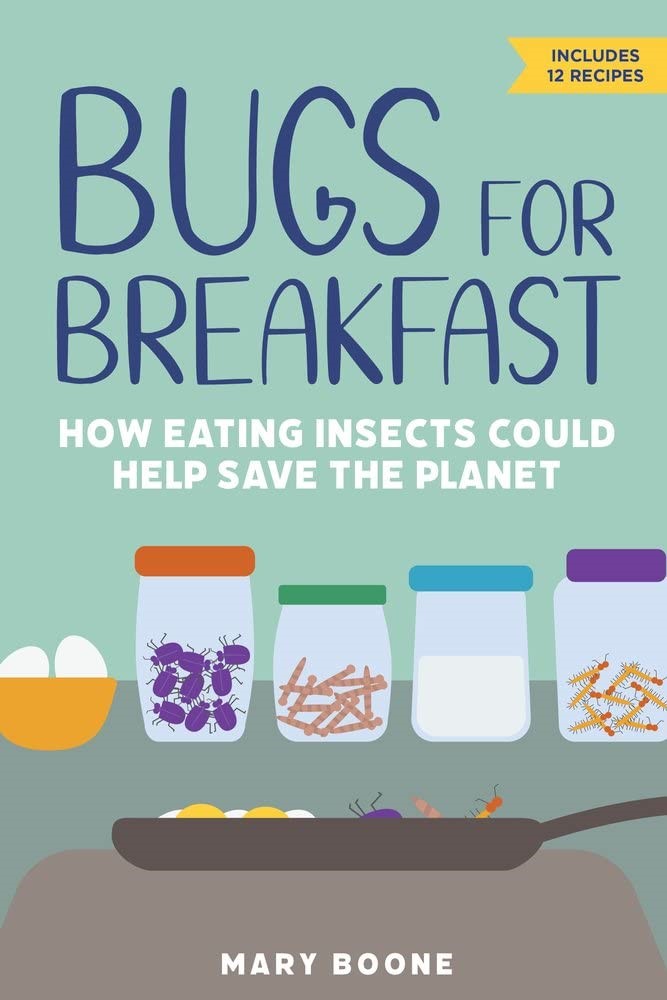
By Mary Boone
Chicago Review Press, 2021
120 pages, paperback, $14.99
Mary Boone got interested in entomophagy (eating insects) about a decade ago when the United Nations issued its report on using insect protein to feed the world’s growing population. When she later traveled to Vietnam and Cambodia, Boone had opportunities to snack on fried grasshoppers at a local market. They were surprisingly tasty, and she got hooked on the idea of eating bugs. Legs are the tricky part, she warns in her book. “Who wants to go through the day with a cricket limb wedged between their front teeth?”
“Bugs for Breakfast,” aimed at readers age 9 and older, is written in a conversational tone, filled with facts and spiced with humor. There are recipes: edible cookie dough, avocado toast with mealworms, and the perennial favorite ants on a log (featuring actual ants). Boone shows why moving from conventional animal protein to insect protein makes environmental sense. She takes readers on a round-the-world tour of buggy delights, showing how people incorporate a diversity of insects from mopane worms to cicadas to beetles into their daily meals.
In one chapter, Boone compares insect farming to conventional livestock farming. Raising a beef cow to maturity requires at least 30 square feet of barn space plus an acre of pasture, and 18 months, to yield 490 pounds of beef. If, instead, you used that acre to raise crickets, after 18 months you’d have 1.3 billion crickets. Once processed, that’s 1.3 million pounds of edible insect protein.
Then there’s the issue of water. When you factor in irrigation for feed crops, drinking water and processing, a pound of beef requires about 1,800 gallons. Raising a pound of cricket protein takes just one gallon of water. Not only that, gardeners will pay good money for frass (cricket poop) — about $10 a pound, notes Boone. And there’s one more advantage: crickets and other insects produce way less methane than cattle. (Lest you wonder, yes, insects fart.)
Not sure you’re ready to put insects on your plate? Don’t worry, says Boone, you’re already eating bugs. USDA regulations allow a certain amount of “bug parts” in food. Not only that, some foods rely on insect byproducts, such as the bug shellac used to make shiny chocolate coatings on certain candies.
Will eating insects help save the world? Yes, says Boone. “If you ate protein from insects one day per week, you could save about 42,927 gallons of water in a year.” She even includes a DIY guide for growing your own crickets.
Sue Smith-Heavenrich, Candor, New York
